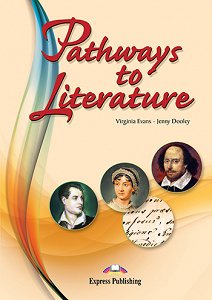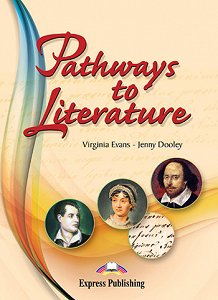Language is more than a communication tool; it is a gateway to imagination, a way to share stories, a means to connect with the world. For students learning English as a second language (ESL), writing a story in English can be both challenging and rewarding.
Narrative skills are indispensable in academic and professional contexts,
as they empower learners to construct coherent arguments,
present compelling ideas, and engage with others on a deeper level.
In this article, we explore the narrative techniques that will help your ESL students evolve into storytellers!
Let's take a look!
How to: Start your story
-
In Medias Res (Into the Middle of Things): Start the story in the midst of action or a critical moment, rather than at the very beginning. This technique plunges the reader into the heart of the narrative, creating immediate engagement and curiosity about how events unfolded.
Example: "The gunshot echoed through the alley, and as Maria turned the corner, she knew her life was about to change."
-
Descriptive Introduction: Begin with a vivid and detailed description of the setting, characters, or atmosphere. This technique sets the scene and allows readers to immerse themselves in the world of the story, creating a strong visual and sensory impact.
Example: "The sun dipped below the horizon, casting long shadows across the deserted beach. The waves whispered secrets as they lapped against the shore, and in the fading light, Emily spotted the mysterious figure approaching."
-
Dialogue Opening: Open with a compelling line of dialogue that intrigues the reader or sets the tone for the story. Dialogue can provide insight into characters, relationships, and conflicts, immediately drawing readers into the narrative.
Example: "‘You can't be serious,’ Mark said, staring at the old map spread out on the table. Sarah grinned, her eyes sparkling. ‘Oh, I'm deadly serious. This treasure is real, and we're going to find it.'"
How to: End your story
-
Circular Ending: Conclude the story by returning to an image, theme, or situation presented at the beginning. This creates a sense of closure and symmetry, emphasizing the journey or transformation undergone by the characters.
Example: "As she stood in the same garden where it all began, Sarah couldn't help but smile. The flowers, once withered, now bloomed with vibrant colors, mirroring the newfound joy in her heart."
-
Twist Ending: Surprise the reader with a plot twist or unexpected revelation in the conclusion. This technique can leave a lasting impact and provoke thought, especially if it challenges the reader's assumptions about the characters or the narrative.
Example: "In the final moments, when all seemed lost, the mysterious stranger revealed their true identity. The revelation sent shockwaves through the room, rewriting the entire story in a single, unforeseen twist."
-
Open-Ended Conclusion: Conclude the story with ambiguity or an open-ended resolution, leaving certain elements unresolved or allowing room for interpretation. This technique encourages readers to contemplate the story's implications and draw their own conclusions.
Example: "As the door closed behind her, Maria took one last glance at the city lights. The future lay ahead, uncertain and full of possibilities. The journey had ended, but the story continued in the unwritten chapters of her life."
Add interest!
To make your narrative more interesting to the reader, you should:
– use a variety of adjectives or adverbs, such as imaginative, wonderful, cautiously, etc instead of simplistic ones such as nice, good, well, etc.
e.g. Instead of: John is a good boy with nice ideas.
you can write: John is a great boy with wonderful ideas.
– Use a variety of verbs such as wondered, screamed, whispered, etc to avoid using “said” all the time.
e.g. Instead of: “Help!” he said.
you can write: “Help!” he screamed.
– Use similes i.e. expressions which describe people or things by comparing them to someone or something else.
e.g. She ran like the wind.
Armed with such tools and their own imagination, students should now be ready to write their own story; being creative by making the most of what they know in their own way.
Time to practise!
Match the beginnings with the endings. Which techniques have been applied? Which pair is not very successful? Rewrite this pair, applying the techniques mentioned before.
A. Underline the words or phrases which are used to describe senses. What sense does each refer to?
1. Maitland staggered across the road, hardly aware of the hooting cars and foul-smelling exhaust fumes. The cut on his arm was burning, his head was throbbing with pain, and the salty taste of blood filled his mouth. A police car screeched around the corner, siren wailing and lights flashing, and Maitland dashed into a dark doorway.
2. It was a hot, lazy afternoon and, from where I sat on the shady verandah, I could see the purple mountains in the distance. The fragrant flowers around me blazed with colour as, sipping my sharply sweet lemonade, I listened to the gentle hum of crickets and the twittering of birds. A soft, cool breeze brushed my skin while I enjoyed the smell of the rich earth. Suddenly, a familiar, annoying buzz sounded in my ear.
B. Look at the following list of verbs, all of which refer to sounds and light, and fill in the correct verbs in the gaps below. Some verbs may be used more than once. Which of these could be used in a story entitled “A Haunted House”?
| 1. leaves/paper ……………………. | 8. sirens/cats …………………………. |
| 2. wind/wolves ……………………. | 9. staircase/floorboards …………. |
| 3. chains ……………………………… | 10. flames ………………………………. |
| 4. stars ………………………………… | 11. doors/guns/explosion ……….. |
| 5. lions/crowd/fire ………………. | 12. owls/cars ………………………….. |
| 6. thunder/lorries ………………… | 13. candles ……………………………… |
| 7. waves/rock music/heart …… | 14. lightning ……………………………. |
Develop your students' language skills through the medium of literature with Pathways to Literature!
Ideal for B2+/C1 CEFR level students, Pathways to Literature presents canonical works of English Literature written in different time periods. Sudents are exposed to a range of genres, techniques, and language structures while developing critical thinking skills and cultural awareness.













